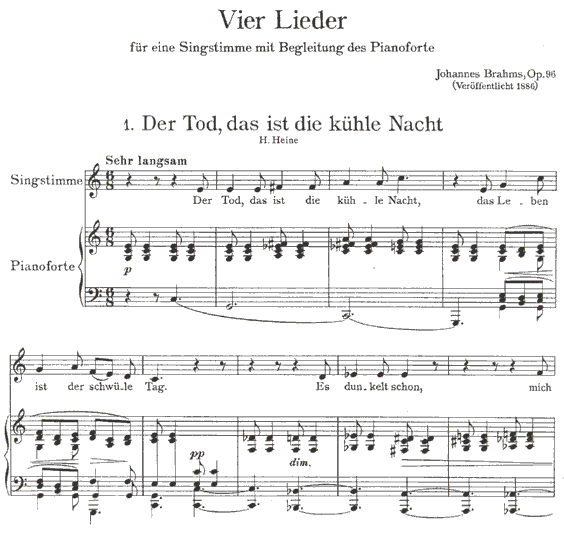TRIO ( ... das ist die kühle Nacht)
per violino, violoncello e pianoforte / for violin, cello and piano (1996/2003)
EDIZIONI SUVINI ZERBONI - MILANO
 pages 3, 4
pages 3, 4
Anche in questo Trio prosegue il percorso di semplificazione estrema degli aspetti armonici, figurali e formali.
Il breve sottotitolo, oltre a informare sul clima espressivo del lavoro, svela, anche se allusivamente, lo spunto brahmsiano da cui questo Trio ha preso le mosse: si tratta dell'inizio del primo Lied dell'op. 96, su testo di Heine, dove è proprio la prima parola omessa, "Der Tod", a caratterizzare segretamente questo Trio, ed in particolare il suo epilogo, come un sereno, quieto commiato.
As I did in other works of the last two or three years, in this Trio I proposed to simplify as much as possible harmonic, figural and, expecially, formal elements.
Without any retrospective look to musical languages of the past, here I tried to give to the audience a clear guide to understanding the development of the work; this is the reason why all of the elements return, so that the evolving of the sections always tries toİplace more emphasis on the immediacy of understanding instead of an excessive elaboration of local aspects.
The short subtitle, which may also give suggestions about the expressive atmosphere, alludes to the Brahms fragment from which this Trio found its starting point: it is the beginning of the first Lied of op. 96, on a text by Heine. The first, omitted word "der Tod", secretly gives the meaning of the work, which becomes especially clear in the slow epilogue: a calm, quiet farewell.


